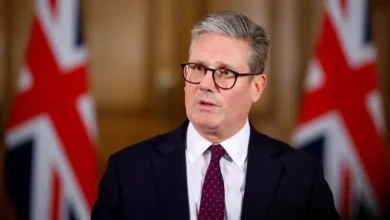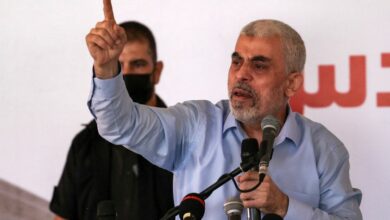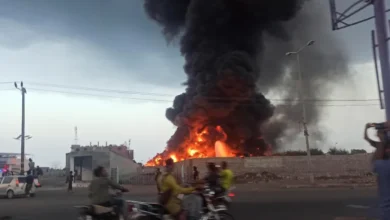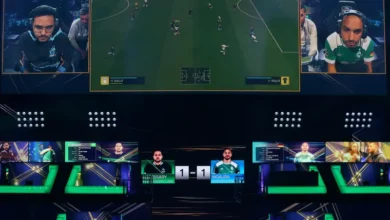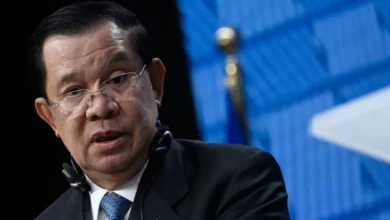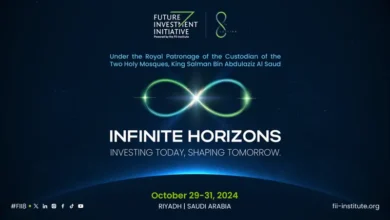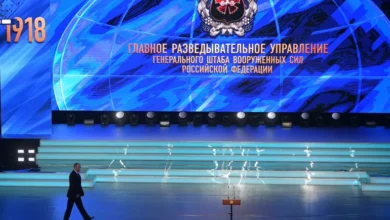Why reopening the Rafah crossing is crucial amid Israeli bombing of Gaza

As the Israeli bombardment of the Gaza Strip continues, 2.3 million Palestinians remain trapped as Israel announced a total blockade of the enclave – no water, no fuel and no electricity – in the wake of Hamas’s deadly attack on October 7.
Efforts to open the Rafah crossing have so far not yielded any results, with Egyptian Foreign Minister Sameh Shoukry saying Israel has yet to allow the opening of the crossing, which connects Gaza to Egypt. He added that Cairo aimed to keep the crossing operational.Egypt is expected to deliver life-saving humanitarian assistance to beleaguered Palestinians in the enclave but has rejected proposals to accept Gaza Palestinians into its borders.
So, what is the crossing that Egypt controls, how is Egypt tied to Gaza amid the continuing conflict and what happens next?
What is the Rafah crossing?
About a million Palestinians have already been displaced as a result of intense Israeli bombing, and an Israeli order to evacuate northern Gaza in preparation for an apparent ground offensive.
Tens of thousands of people have been sheltering in UN schools while the medical situation is at breaking point.
The Rafah crossing, located in the southern part of Gaza bordering Egypt’s Sinai peninsula, is the only way Palestinians can get out of Gaza and aid can enter since Israel has imposed a total siege on the enclave.
Both Israel and Egypt enforce strict control over the passage of people and goods as part of an earlier blockade imposed in 2007 after Hamas came to power.
The crossing is increasingly coming up in negotiations between different parties as they try to navigate the war that erupted on October 7 when Hamas fighters entered Israel and began launching rockets, killing at least 1,400 people so far. Israel has since killed at least 2,700 Palestinians in a relentless bombing campaign in the past eight days.
Rafah was closed after the start of the conflict, as Israel repeatedly bombed it. Egypt claims its own side of the crossing remains operational, but the Israeli air strikes have significantly damaged infrastructure on the Palestinian side.Hundreds of tonnes of aid from NGOs and several countries were waiting on trucks in the nearby Egyptian town of El Arish on Monday for permission to enter Gaza, two sources there and a witness told Reuters.
Egypt’s Sinai peninsula and Gaza
The Sinai peninsula, which also borders Israel, is located between the Mediterranean Sea to the north and the Red Sea to the south. As the only part of Egypt to be located in Asia, it acts as a land bridge between Asia and Africa.
The Sinai was controlled by the Ottoman Empire for centuries until the 19th century, subsequently falling into the hands of the British colonial power, which maintained control till the mid-20th century.
Sinai was captured by Israel in the wake of the Six-Day War with Arab states in 1967. Israel returned Sinai to Egypt after the Camp David Accords brokered by the United States. Egypt became the first Arab nation to officially recognise Israel as part of the peace deals. Israel fully withdrew from the Sinai peninsula by 1982.
1) Gaza: Surviving Shujayea
On the 13th day of Israel’s assault on Gaza in July 2014, it declared the neighbourhood of Shujayea a closed military zone. That neighbourhood was home to eight-year-old Bisan Daher and her family. Israeli attacks on the area forced thousands of residents to flee and killed at least 72.
As Israeli planes flew overhead, a Palestinian ambulance team heard someone crying for help from deep beneath the remains of a home. It was Bisan. Six members of her family had been killed in the bombing.
2) Farah: Scarred by Gaza’s War
When Israeli forces attacked her home in Gaza, killing her mother, grandfather, aunt and three uncles, three-year-old Farah was left with third-degree burns.
This film follows her journey as she travels to the US for treatment, undergoing medical care surrounded by unfamiliar faces, and tells the story of the Arab American families who take her in during her nine-month ordeal.
3) Skies Above Hebron: Growing up Palestinian in the occupied West Bank
Three Palestinian boys grow up in the divided heart of the occupied West Bank city of Hebron.
Over five years, this film follows the challenges and hopes of the boys, Amer, Anas and Marwaan, as they face threats to arrest them and Israeli settlers eager to move into their homes.
4) Defying My Disability
In this film, we meet seven Palestinians aged between seven and 28 with different disabilities. Most were born with them; one was injured in Israeli attacks on Gaza.
In the face of conflict, occupation, tragedy and disability – in places ill-equipped to handle special needs – we see how they have learned to navigate complex challenges with optimism and strength.
5) Between Fire & Sea: The Man Behind Gaza’s Great March of Return
“What would happen if thousands of Gazans, most of them refugees, attempted to peacefully cross the fence that separated them from their ancestral lands?” was a question posed by Ahmed Abu Artema, a Palestinian poet and non-violence resistance activist, on Facebook.
His post went viral and became the rallying cry that inspired a movement of peaceful protests known as the Great March of Return. Many of the marches took on a carnival-like atmosphere, with people of all ages and even traditional dabke dancers in attendance. But they were met with violence.
This film follows Ahmed as he visits some of the injured and relatives of those killed and tries to reconcile the human toll with his belief in the power of non-violence.
